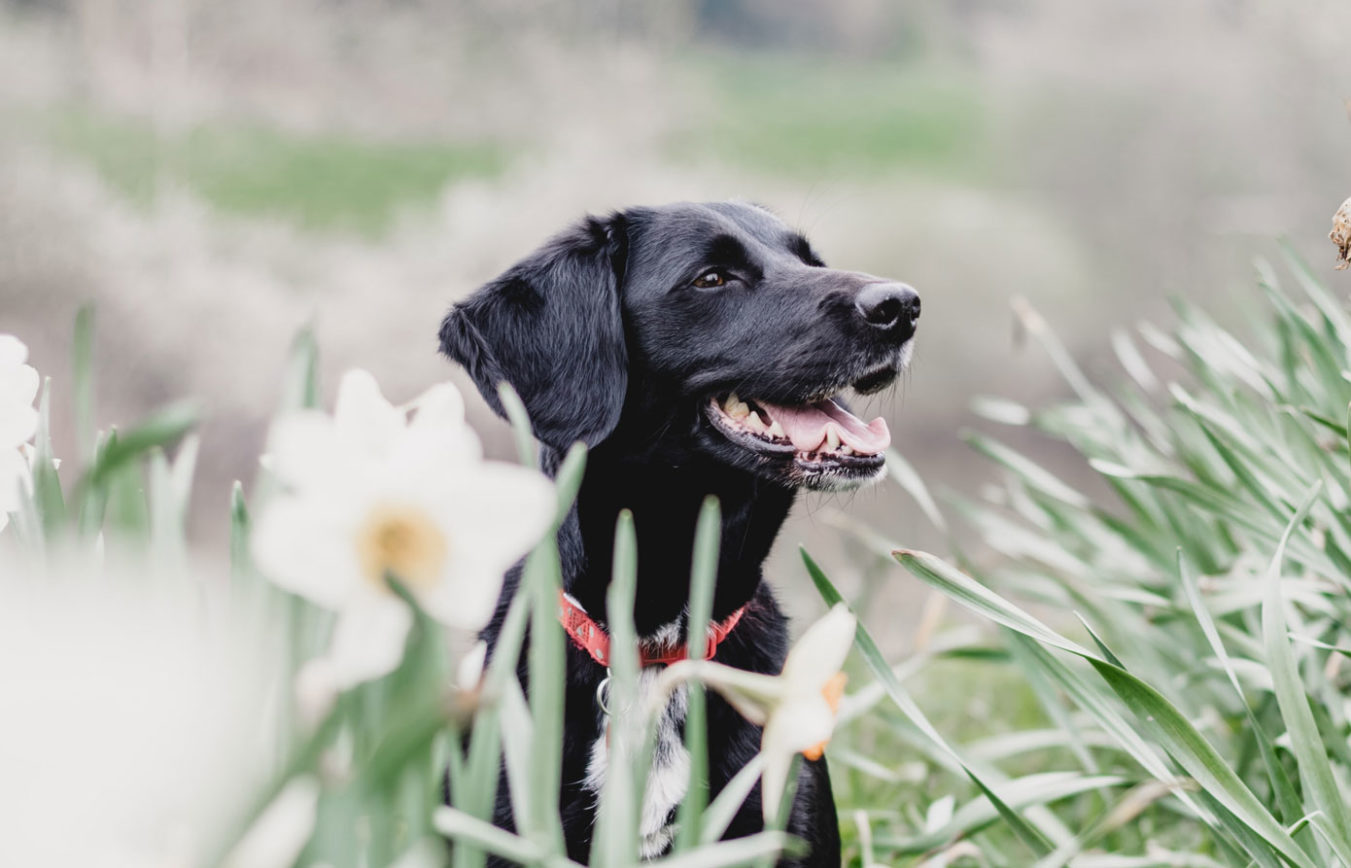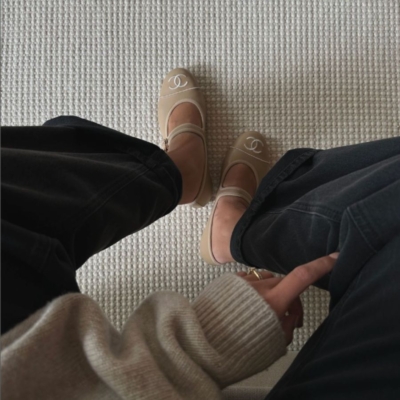What is it about animals? The creatures that keep us company – guides, companions, hindrances, sources of fear, of love. This piece, from Running Feet, Sharp Noses, a new collection of essays on the animal world, reveals how profoundly animals can affect our memories, our sense of self, our outlook and even our actions …
When I was growing up, neighbours around ten houses away had a Weimaraner. It was sculptural in its perfection. It bit every member of their family. It was called Taupe.
Most dogs I knew growing up were called Brandy or Guinness or Whiskey, but the family who owned Taupe had white-painted walls and art in thin frames, and so instead of calling their dog after a drink, they called him after an intangible shade that existed somewhere north of beige, south of mushroom. It was a ghostly shade, and Taupe was a ghostly dog, appearing in the corner of your eye, not making any noise at all until he was close enough to begin barking and slavering.
Once when I was alone in the lane that ran behind our houses, Taupe escaped his back garden and came at me, growling. I ran. In my mind I can feel Taupe’s breath on the back of my neck, the singing of the nerves in my shoulders as his jaws inched closer. But of course, this is most likely a memory constructed later, one that coagulated around the fear of dogs that stemmed from whatever the truth of this incident was. It feels very real though. My mother remembers me slamming the back door and standing in the kitchen gasping TAUPE TAUPE TAUPE which must have been confusing at the time. The dog bit the family’s baby soon after, and was put down. Their next dog, a Maltese, was stolen from their back garden a few months later. I’m not sure whether they had bad luck with dogs, or dogs had bad luck with them.
For a long time I’ve been interested in the idea of the uncanny; those things that strike you as initially familiar, before revealing their strangeness in a manner that makes you feel like something sacred and safe has been violated. Sigmund Freud, in his 1919 essay “The Uncanny’, talks about the transformation of the idea of what is heimlich or “homely” to unheimlich – which does not necessarily mean “unhomely”, but rather “a hidden, familiar thing that has undergone repression and then emerged from it”. It’s the very familiarity of the uncanny that provokes our fear. For a long time after the Taupe incident, I was afraid of dogs. This encounter is my earliest clear memory of being afraid, and this fear was planted among my foundational memories of home, forever linking the uncanny, in my mind, to dogs – those least uncanny-seeming of creatures.
Because of this fear, we had cats, and I became attuned to their ways of being, which are very different to dogs’ ways of being. I remember, as a child, the process of learning how to exist in the presence of cats; how to adapt my movements to make them comfortable, in a way that’s such second nature to me now that when a person unused to cats blunders into a room and startles a cat, I feel affronted on the cat’s behalf. My dad was an inveterate cat-startler, always sweeping noisily into rooms. One day he opened the door to our kitchen and was brought up short by the sudden stillness of the five cats who had positioned themselves around the room and who up until his entry had been engaged in various acts of grooming or lolling about. My dad started to walk carefully through the kitchen. I watched from the other end of the room. He got about a third of the way across the floor before the nearest cat to him made a break for the back door, sending the others whirling about the room in a hurricane of shed fur, their claws shredding soft furnishings as they went. For JAYSUS’ sake, my dad erupted, I’m sick of fuckin’ pussyfootin’ around my own house!
I felt the same way about dogs for a long time. I wanted to understand them, but there was that fear – even their effusiveness alarmed me. If confronted with one that seemed friendly, I would try to pet their heads and they would try to lick my hand and I would try again to pet their heads like that ‘One potato, two potato’ game where you stack hands endlessly on top of each other, but no one gets petted and no one’s hand gets licked. They would jump and bark and I never understood why.
For a long time I’ve wondered if the emotion I experience when I recall this memory is displaced sadness about my parents’ divorce; the
loss of our family home, that premature closing of the door into childhood. To be honest, none of these things move me the way the memory of that dog does.
Then one Christmas our neighbour, a man who was caring for his dying mother, got a puppy he called Precious. Precious was a small black bullet-shaped mongrel terrier with an empathetic gaze. Our neighbour brought her to our house on Christmas day where she full-body wriggled around the room and pissed on the carpet.
Precious must have had some springer in her, because no wall could confine her. She would regularly turn up in our back garden uninvited, staring hopefully through the glass in our back door. Learning her movements and boundaries diminished my fear of other dogs to a manageable level. Eventually, I would go to my back garden and call her and she would bound over the walls between the gardens. Even the cats had a lot of time for her, all things considered, and I’d set off into the back lane with the dog and most of the cats in tow. Sometimes our neighbour would let me take her for walks to the local park, where she would exhaust herself straining on her lead. But I got older, and pets became less central to my day to day existence. When I was thirteen, my parents’ marriage ended and we moved away from the area. Precious continued to exist within the bubble of my childhood, which never escaped the walls that she had leaped with such ease.
In an episode in Claire Kilroy’s 2012 novel, The Devil I Know, Tristram St Lawrence, our amoral protagonist, is exploring the grounds of his ancestral home with avaricious property developer Hickey, who wants to build on the land. The pair make an unnerving discovery. A childhood pet of Tristram’s, a pony called Prince, has been abandoned in the grounds and re-emerges from the undergrowth. “The damage,” as Tristram refers to the pony, has come back, bursting from the unconscious bringing with him connotations of a childhood innocence not lost, necessarily, but decayed. It’s an immensely troubling scene, a moment of deep uncanniness. How could the pony still be alive? I found myself asking while reading, this makes no sense, surely someone would have done something, surely it couldn’t have survived so long … The reader shares Tristram’s horror at this confrontation, and his urge to deny its reality. But there, undeniably, is the pony. Tristram says of him: Soon the girls were no longer girls but he wasn’t to know that, and so he’d been waiting for them to return ever since, wondering, if ponies can wonder and I fear they can – I fear that every blessed thing on this earth is cursed with the capacity to wonder at its predicament – Prince was left wondering what he’d done wrong.
Tristram runs away from this unsettling confrontation and does what he always does – uses his money to make “the damage” disappear by having the animal put down. There’s something in this episode in the book that I find uncomfortably moving. Is it anthropomorphism? Yes of course. But there’s something in the image of that pony that seems to represent innocence doomed to suffer. It’s a cruel dynamic, but it exists, no matter how I try to ignore it.
When I was in my early 20s, long after we’d moved away from my childhood home, a surprise caller came to my mother’s door. It was late spring and I was upstairs studying for college exams. A voice that tugged at the edges of memory pulled me downstairs, where our old neighbour, Precious’s owner, was standing in our doorway, talking to my mother. He looked older, a little frailer. For a moment I saw the shadow of his mother in him, a wraithlike figure from my childhood, who would throw coins out the window and shout at me, “Boy! Get me some cigarettes!” Our neighbour was chatting to my mother – his house had burned down, and by astonishing coincidence, he had rented a house on our road while his own was being renovated. I stood on the stairs (the hallway was tiny) and we all made small talk. It took me a moment to notice the lead in his hand. Eventually our neighbour moved his bulk from the doorway and we saw her. She was crouched on the path behind him, black fur gone grey. Even from that distance I could pick out the tracery of her ribs. Her eyes were milky, and she turned her head only slightly when I said her name. It couldn’t be her, I thought. She had been old when my parents’ marriage had ended, old when, seven years previously, we had left that neighbourhood behind us. This shivering thing had to be another dog. The misery that gripped me at the sight of her felt a lot like fear. Freud, quoting Jentsch in “The Uncanny” says, ‘‘In telling a story, one of the most successful devices for easily creating uncanny effects is to leave the reader in uncertainty whether a particular figure in the story is a human being or an automaton’’; here, as in The Devil I Know, the subject that confronts us is not an automaton, but a revenant. The effect is the same.
Our neighbour confirmed it was Precious, said something about her joints, said something about her sight, but I wasn’t really listening. He pulled her lead until she crept into the house and sat in our living room, hunched, not knowing where she was. She looked distressed. I put my hand on her grey muzzle hoping for some flicker of recognition. But there was nothing.
I made my excuses and went back upstairs to my room to recover from the shock, from the sense that something in the natural order had been disturbed. I sat on my single bed and listened to the voices rising and falling downstairs. I listened for the pauses in the conversation where I might hear the dog’s shuddering wheeze. In the literature for Mike Kelley’s 2004 exhibition, “The Uncanny”, at Tate Liverpool, the idea of the ‘double’ is invoked – “the disturbingly realistic representation of the human figure suspended between life and death”. Precious, it seemed to me, was trapped in that in-between state; a place without any sense of finality, or resolution, or potential.
I sat on the edge of the bed staring out the window for a long time after the door closed and Precious retreated back into the strange limbo she’d crawled out from. We all know on some level that death is the ultimate kindness, and the withholding of it the stuff of nightmares. For a long time I’ve wondered if the emotion I experience when I recall this memory is displaced sadness about my parents’ divorce; the loss of our family home, that premature closing of the door into childhood. To be honest, none of these things move me the way the memory of that dog does.
Pre-order Running Feet, Sharp Noses, €15, published on February 20, at www.papervisualart.com.
LOVETHEGLOSS.IE?
Sign up to our MAILING LIST now for a roundup of the latest fashion, beauty, interiors and entertaining news from THE GLOSS MAGAZINE’s daily dispatches.









